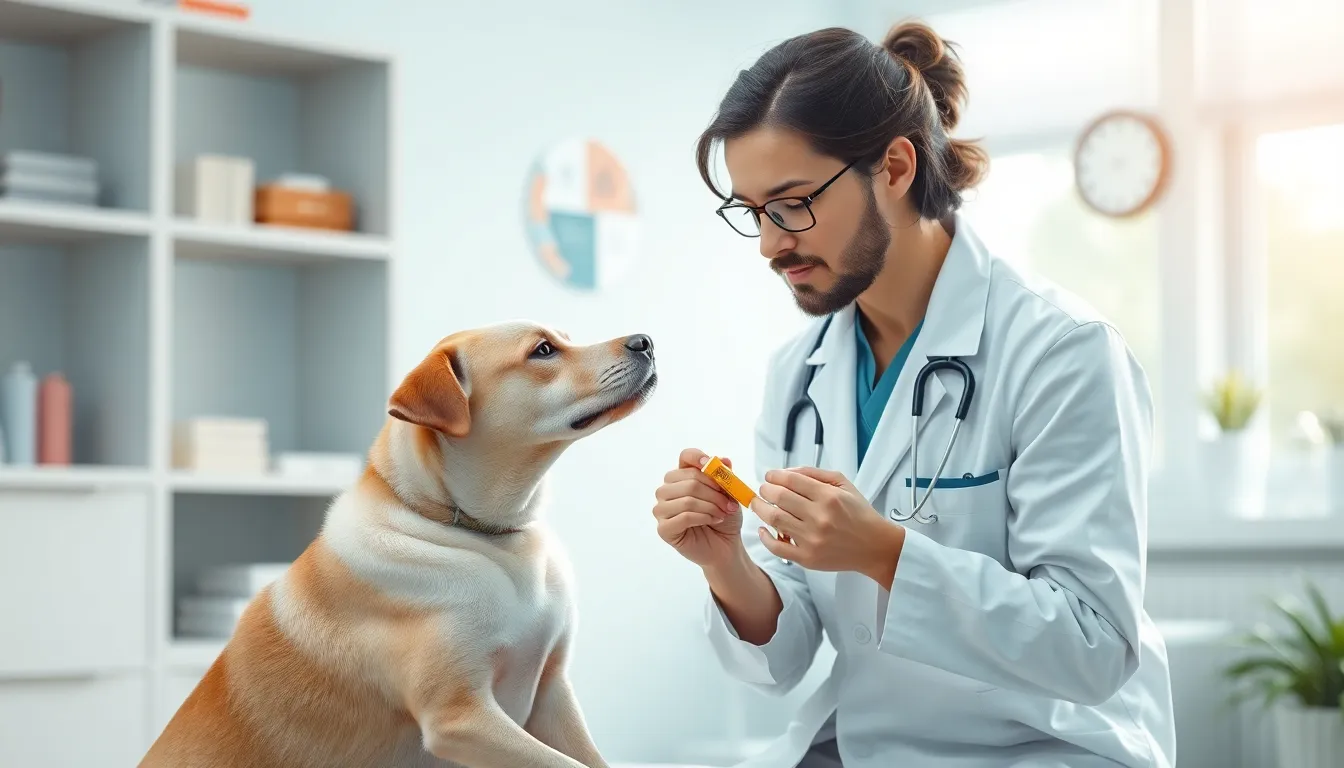When it comes to caring for our furry friends, every pet parent wants to be a superhero. But what if that superhero cape comes with a side of confusion? Enter Neosporin, the trusty ointment that’s saved many a human from the perils of minor cuts and scrapes. But can it work its magic on dogs too?
Table of Contents
ToggleUnderstanding Neosporin
Neosporin is a well-known antibacterial ointment commonly used to promote healing in minor wounds. This remedy boasts a combination of antibiotics that protects against infections.
What Is Neosporin?
Neosporin contains three active ingredients: neomycin, polymyxin B, and bacitracin. These antibiotics work together to prevent bacterial growth. Additionally, the ointment provides a moist environment that aids in wound healing. Veterinarians often debate the suitability of this ointment for dogs. While it can help some minor injuries, caution is essential when using it on pets.
Common Uses in Humans
In humans, Neosporin treats minor cuts, scrapes, and burns. Many individuals rely on it to prevent infections after small injuries occur. Users apply a thin layer to the affected area, usually two to three times daily. This frequency helps speed up the healing process and decreases the risk of infection. Some people also use it to reduce scars from previous wounds. Overall, its effectiveness and popularity make Neosporin a staple in many home first aid kits.
Safety of Neosporin for Dogs

Using Neosporin on dogs requires careful consideration. Veterinarians express mixed opinions regarding its safety and effectiveness for canine use.
Veterinary Opinions
Some veterinarians recognize Neosporin’s potential to prevent infections in minor wounds. They highlight its antibiotic properties as beneficial, particularly in treating superficial cuts. However, many professionals do not recommend it, suggesting that specialized veterinary formulations are better suited for pets. Seeking veterinary advice is crucial before applying any human medication on dogs.
Potential Risks and Side Effects
Applying Neosporin poses certain risks for dogs. Allergic reactions can occur, leading to symptoms such as redness, swelling, or itching. Further, ingestion of the ointment might result in gastrointestinal upset, including vomiting or diarrhea. It’s essential to monitor the dog closely after use and consult a veterinarian if any adverse effects arise.
When to Use Neosporin on Dogs
Neosporin may serve a purpose for treating some minor injuries in dogs. It’s crucial to assess the situation before application.
Minor Wounds and Scrapes
Neosporin can assist in preventing infection in minor wounds and scrapes. Pet owners often use this ointment for small cuts, especially when they are superficial. Application usually occurs two to three times daily, promoting speedier healing. Many dogs respond positively to treatment when monitored closely. Caution is essential; ensure pets don’t lick the area treated. Close observation can prevent complications resulting from improper use. Consultation with a veterinarian remains advisable before trying this method.
Alternative Treatments
Many alternative treatments exist for managing minor injuries in dogs. Veterinarians often recommend specific veterinary formulations designed for pet safety. These alternatives typically offer tailored ingredients that minimize the risk of adverse reactions. Options like medicated sprays or gels can provide effective healing without the uncertainties associated with human products. Herbal remedies also come into play, including coconut oil and aloe vera, which possess natural antibacterial properties. Evaluating these alternatives can offer safer routes for pet wound care. Always discuss choices with a veterinarian to ensure optimal care for the pet.
How to Apply Neosporin to Dogs
Applying Neosporin to dogs requires careful attention to hygiene and technique. Owners must prioritize cleanliness and monitor their pets closely during the process.
Cleaning the Wound
Start by gently cleaning the affected area with mild soap and water. This step removes dirt, debris, and bacteria, minimizing infection risk. Pat the area dry with a clean cloth, ensuring moisture does not remain. For deeper wounds, a veterinarian should assess the injury before proceeding. Clear communication with the vet can determine if Neosporin is appropriate. Always handle the dog calmly during this process to reduce stress.
Proper Application Techniques
Applying Neosporin requires specific techniques for effectiveness. Use a clean finger or a sterile cotton swab to apply a thin layer of the ointment to the wound. Ensure the ointment covers the injury completely for optimal protection. Avoid excessive amounts as this may lead to complications. After applying, keep the dog from licking the area by using a cone or offering distraction. Monitoring for any adverse reactions or signs of irritation is essential. Regularly check the wound and reapply the ointment as directed, typically two to three times daily, but consult a veterinarian for specific recommendations.
Using Neosporin on dogs can be a topic of debate among pet owners and veterinarians. While it may provide some benefits for minor wounds and help prevent infection, it’s crucial to approach this treatment with caution. Monitoring the dog closely after application is essential to avoid potential side effects.
Veterinary advice should always be sought before using any human medication on pets. Exploring alternative treatments specifically designed for dogs can often lead to safer and more effective healing solutions. Prioritizing the well-being of pets ensures they receive the best care possible during their recovery.



